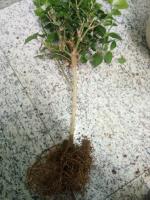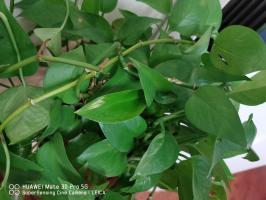Introduction
Plants are fascinating organisms that play a critical role in our ecosystem. They are capable of producing their food via photosynthesis, a process that requires water, nutrients, and sunlight. In this article, we will explore how plants obtain water and nutrients and prepare sugars.
Water and Nutrient Uptake
Plants obtain water and nutrients via their roots, which are usually found underground. The roots of plants are covered in tiny hairs that increase their surface area, allowing them to absorb water and nutrients effectively. The process by which plants absorb water and minerals is called osmosis. As water and nutrients enter the roots, they are transported to the plant's leaves and stem through a system of tubes called xylem and phloem.
The Role of Sunlight
Sunlight plays a critical role in the process of photosynthesis, which is how plants make their food. Chloroplasts, which are unique to plant cells, contain chlorophyll, a green pigment that is responsible for capturing sunlight. Once the chlorophyll has absorbed sunlight, it starts a chain of chemical reactions that ultimately lead to the production of glucose, a simple sugar that stores energy.
The Process of Photosynthesis
Photosynthesis is a complex process that involves several chemical reactions. The process begins when sunlight is captured by the chlorophyll in a plant's leaves. The captured sunlight is then used to split water molecules into hydrogen and oxygen. The oxygen is released into the air, while the hydrogen combines with carbon dioxide to form glucose. This glucose is then stored in the plant's cells as energy.
The Importance of Nutrients
The nutrients that plants need most are nitrogen, phosphorus, and potassium. These nutrients are essential for the growth and development of a plant's cells. Nitrogen is needed to make proteins and nucleic acids, while phosphorus is used to create DNA and cell membranes. Potassium is important for regulating the plant's water content and maintaining its structural integrity.
Sugar Storage
Once glucose is produced, it is transported to various parts of the plant for storage. Some glucose is stored in the plant's leaves and stem, while others are stored in its roots. As the plant grows, it will use this stored glucose to fuel its energy needs.
Conclusion
In conclusion, water and nutrients are critical for the growth and development of plants. Without them, plants would not be able to produce the energy they need to survive. Through photosynthesis, plants are able to use sunlight to produce the glucose they need to store energy. By understanding these processes, we can better appreciate the vital role that plants play in our ecosystem.

 how many times do yo...
how many times do yo... how many planted tre...
how many planted tre... how many pine trees ...
how many pine trees ... how many pecan trees...
how many pecan trees... how many plants comp...
how many plants comp... how many plants can ...
how many plants can ... how many plants and ...
how many plants and ... how many pepper plan...
how many pepper plan...































